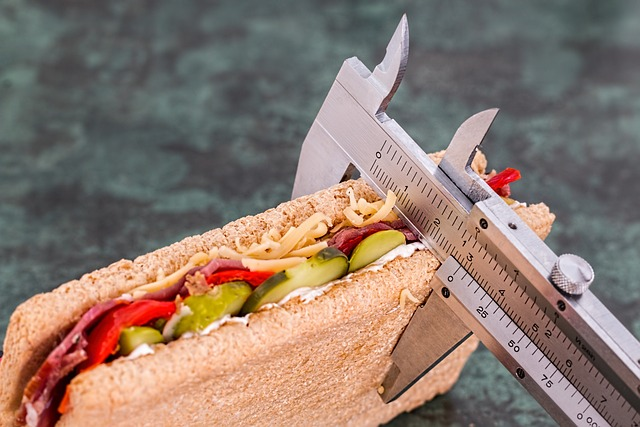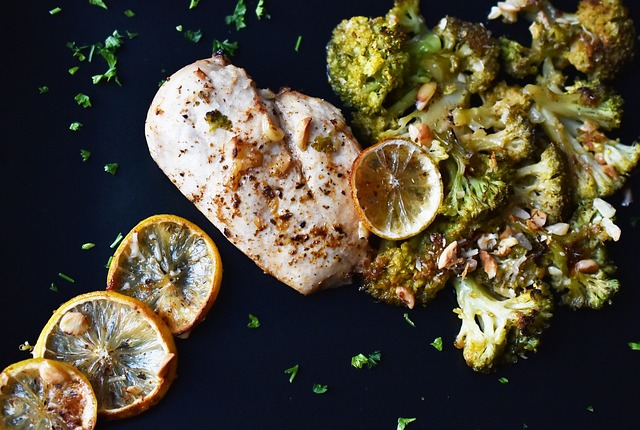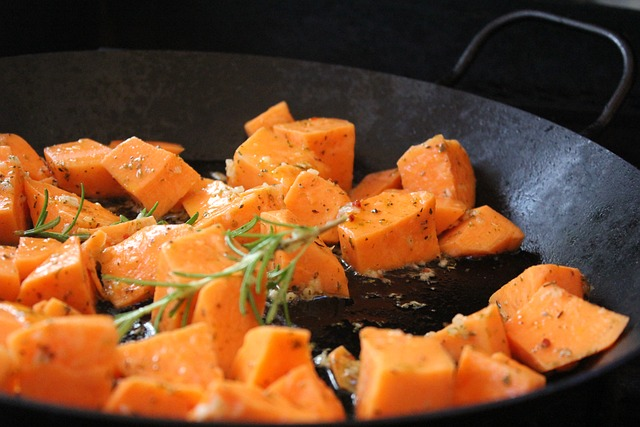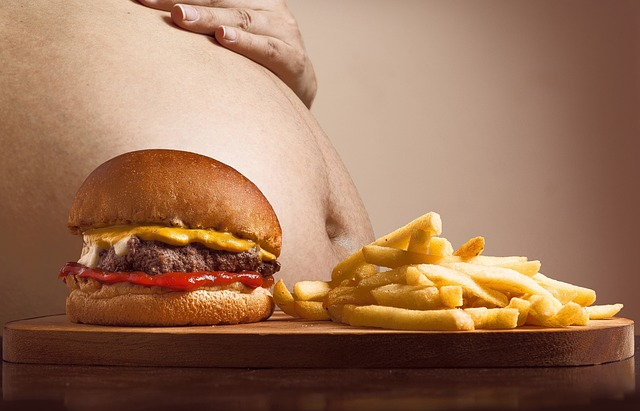What is Bulking?
Bulking is a fundamental concept in the world of fitness and bodybuilding. So, what is bulking? It’s a term that’s often thrown around in gym conversations and nutrition discussions. But what does it really mean, and why is it an essential phase in the pursuit of a well-defined and muscular physique? In this comprehensive guide, we’ll dive into the science of bulking, the bulking process, common challenges and mistakes, tracking progress, and how it relates to the cutting phase.

BULKING
What is Bulking?
The bulking is the period during which people increase their calorie intake and aim to gain muscle mass. It’s a phase characterized by a controlled surplus of calories that provides the body with the necessary energy to build and repair muscle. The primary goal of bulking is to pack on lean muscle while minimizing fat gain.

Why Would You Need to Bulk?
The need for bulking arises from the desire to build a strong, muscular physique. Whether you’re a bodybuilder, an athlete, or simply someone looking to enhance your physical strength and appearance, bulking can play a crucial role. Here are some reasons why you might consider bulking:
Muscle Growth: Bulking is the most effective way to promote muscle hypertrophy, which results in increased muscle mass.
Performance Improvement: If you’re an athlete or fitness enthusiast, bulking can help you perform better in your chosen sport or physical activity.
Metabolic Benefits: A higher muscle mass can boost your metabolism, making it easier to control your body composition in the long run.
Body Transformation: Bulking can help you achieve the desired body transformation, taking you from a lean or average physique to a more muscular and well-defined one.
Now that we understand the essence of bulking, let’s explore the science behind it.
SCIENCE OF BULKING
Caloric Surplus
Explaining the Concept: At the heart of bulking lies the fundamental concept of a caloric surplus. This approach entails intentionally consuming more calories than your body typically expends in a day, thereby creating an energy surplus. This surplus, in essence, becomes the foundation for stimulating muscle growth.
The premise behind a caloric surplus is relatively straightforward. By consistently providing your body with an excess of energy in the form of calories, you ensure that it has an ample supply to fuel both your daily activities and the rigorous demands of your weightlifting and resistance training workouts.
This surplus serves as a vital resource that your body taps into, allowing it to repair and build new muscle tissue more efficiently.
The key to a successful caloric surplus is finding the optimal balance. It’s not a license to consume unlimited calories; instead, it requires a structured and purposeful approach.
Monitoring your progress and making appropriate adjustments ensures that you’re gaining muscle rather than excessive fat.
This balancing act, maintaining a caloric surplus without going overboard, is a central principle in bulking, aimed at achieving your muscle growth goals while keeping fat gain in check.
Calculating Your Caloric Needs: When it comes to understanding your daily caloric requirements, several methods are available to guide you in determining the optimal intake for your bulking phase.
One of the most widely employed approaches is the Harris-Benedict Equation, which takes into account two crucial factors: your Basal Metabolic Rate (BMR) and your activity level.
Your Basal Metabolic Rate represents the calories your body requires at rest to perform basic functions like breathing, circulating blood, and maintaining body temperature.
By accurately calculating your BMR, you establish a fundamental baseline for your calorie needs. This forms the foundation upon which you can strategically build your caloric surplus for muscle growth.
In general, the target is to consume approximately 300 calories more than your “body weight maintenance number of calories.” This delicate balance ensures you maintain an optimal caloric surplus for muscle development while minimizing fat gain.
The key to a successful bulking phase is precision and consistency. Tracking your progress, regularly monitoring your calorie intake, and making adjustments as needed are all crucial elements in fine-tuning your dietary approach.
By employing these principles, you can harness the power of a well-calibrated caloric surplus to stimulate muscle growth effectively, ensuring that your bulking phase results in the desired muscle mass gains with minimal excess body fat.

Macronutrients
Protein, Carbohydrates, and Fats: Proper macronutrient intake is crucial during bulking. Protein supports muscle repair and growth, carbohydrates provide energy, and healthy fats help with hormone regulation.
Recommended Ratios: The ideal macronutrient ratio can vary based on individual goals and preferences, but a common guideline for bulking is approximately 40% carbohydrates, 30% protein, and 30% fat.
Nutrient Timing
Nutrient timing plays a significant role in optimizing bulking results. It involves eating the right nutrients at specific times, such as pre-workout, post-workout, and rest days, to maximize muscle protein synthesis and recovery.
BULKING PROCESS
Muscle Gain vs. Fat Gain
Before diving into the bulking process, it’s crucial to understand that you’ll gain both muscle and some body fat during this phase. It’s unavoidable that you gain some amount of fat during the bulking phase. However, the goal is to minimize fat gain while maximizing muscle growth.

Workout Routine
Resistance Training
The foundation of a successful bulking plan is a well-structured resistance training program, with a particular focus on compound exercises. These multi-joint movements, like squats and deadlifts, are highly effective for stimulating muscle growth.
They engage multiple muscle groups, trigger anabolic hormone release, and contribute to balanced and proportionate muscle development.
Combining compound exercises with isolation movements helps achieve a well-rounded physique that is both strong and aesthetically pleasing, making them a key component of your bulking regimen.

Cardio and Bulking
Balancing cardiovascular exercise within your bulking plan is crucial. While excessive cardio can impede muscle growth by burning too many calories, moderate cardio can contribute to a healthy cardiovascular system without compromising gains.
Find the right equilibrium between resistance training and cardio, possibly through short, high-intensity sessions, to ensure both muscle growth and cardiovascular health are supported during your bulking journey.
Diet Plan
Foods to Include
Crafting an effective bulking diet hinges on the selection of nutrient-dense, whole foods that provide a wide array of essential macronutrients and micronutrients. At the foundation of your bulking diet, lean proteins take center stage. These include sources like chicken, turkey, lean cuts of beef, and fish, which supply your body with the necessary amino acids for muscle growth and repair.

Complex carbohydrates play a pivotal role in fueling your workouts and replenishing glycogen stores. Foods like brown rice, quinoa, sweet potatoes, and oats provide a steady source of energy to support intense training sessions and maintain overall energy levels throughout the day.

Don’t underestimate the importance of vegetables in your bulking diet. They not only add crucial vitamins and minerals but also offer fiber, which aids in digestion and promotes a feeling of fullness. Incorporate a variety of vegetables like broccoli, spinach, and kale into your meals to ensure a well-rounded and nutrient-rich diet.

Finally, healthy fats are essential for hormone production and overall well-being. Avocados, nuts, seeds, and olive oil are great sources of healthy fats that should be included in your diet to support your muscle-building efforts.

By focusing on this nutrient-rich, whole foods, you’re not only providing your body with the essential building blocks for muscle growth but also promoting overall health and vitality during your bulking phase.
Supplements
Protein
Protein is a bulking essential, delivering a convenient source of high-quality protein crucial for muscle repair and growth.
It offers a quick and easy way to meet your daily protein requirements, while post-workout, it accelerates muscle recovery and minimizes soreness.
Protein helps control hunger, aiding in calorie management during your bulking phase. In summary, protein is a valuable addition to ensure efficient muscle recovery and growth, making it a must-have in your bulking journey.
Creatine
Creatine is a critical supplement for effective bulking, aiding in ATP (adenosine triphosphate) activation, which is the body’s primary source of energy. By increasing your body’s creatine phosphate stores, it provides a readily available energy source for high-intensity exercises, allowing you to push harder during workouts, thereby promoting muscle growth.
Additionally, creatine encourages muscle cell hydration, further enhancing the environment for muscle growth and repair.
It also plays a role in boosting muscle protein synthesis, contributing to more effective muscle development during your bulking phase.
Creatine supplementation may help in reducing muscle soreness and fatigue, making your bulking workouts more productive and efficient.
Glutamine
This amino acid can aid in muscle recovery and reduce muscle soreness. Glutamine is a valuable supplement during bulking for several reasons.
It aids in muscle recovery, reducing downtime between intense workouts. Additionally, it bolsters the immune system, helping you stay consistent in your training.
Glutamine promotes a positive nitrogen balance, crucial for muscle protein synthesis.
It supports digestive health, optimizing nutrient absorption in your increased-calorie diet.
TRACKING PROGRESS
Measuring Muscle Gain
Tracking your progress is needed in the bulking process. It not only keeps you informed about the effectiveness of your efforts but also allows you to make necessary adjustments to your plan.
One key aspect to track is muscle gain, which provides a tangible indicator of your success.
This can be accomplished by regularly measuring your body’s physical changes, such as alterations in arm, chest, and leg circumference, providing valuable insights into your body’s response to the bulking regimen.
Start to measure your body weight to see whether you are gaining muscle mass. A smart scale can help you see all the different measurements like lean muscle mass or body fat.

Adjustments to the Bulking Plan
Periodically evaluate your bulking plan and make necessary adjustments. If you’re gaining too much fat, consider reducing your caloric intake, and if you’re not gaining muscle, adjust your training program and nutrition accordingly – try to move heavier weights and add some extra calories each day.
COMMON CHALLENGES AND MISTAKES
Overeating
One of the most common mistakes in bulking is overeating. It’s essential to maintain a controlled caloric intake to avoid excessive body fat gain. Striking the right balance between calorie intake and expenditure is essential.
Excessive overeating not only destroys your physique goals but can also result in poor nutrient partitioning, potentially storing excess calories as fat instead of promoting muscle growth.
To avoid this pitfall, maintain a controlled caloric intake, calculate your requirements precisely, and monitor your progress regularly.
Quality nutrition and a controlled calorie surplus are key to a successful and sustainable bulking journey.

Inadequate Protein Intake
Protein is the building block of muscles, and insufficient intake can slow down your progress. Meeting your daily protein requirements is essential to provide your body with the necessary amino acids for muscle repair and growth.
Adequate protein intake speeds up the recovery of muscle fibers after workouts and helps maintain a positive nitrogen balance for effective muscle protein synthesis.
Protein-rich diet can help control your appetite and calorie intake, supporting both muscle growth and overall bulking success.
Ignoring Cardio
While cardio should be moderated during bulking, completely neglecting it is a mistake. Cardiovascular health is essential, even during the bulking phase.
Neglecting cardio can lead to a decline in cardiovascular health, affecting your energy levels and performance in resistance training.
Incorporating some cardio helps manage calorie balance, preventing excessive fat gain and promoting a more balanced physique. Occasional cardio after your resistance training will help you keep burning fat gained from bulking.
Overall, maintaining a balanced approach to cardio supports both your cardiovascular health and successful bulking.

Neglecting Rest and Recovery
Adequate sleep and rest are crucial for muscle repair and growth. Neglecting these aspects can hinder your progress.
Rest is essential to avoid overtraining, burnout, and injury, allowing your body to adapt to the training stresses and promote muscle growth. Prioritize sleep and active recovery techniques to ensure your overall well-being and enhance your muscle gains.
Rest and recovery are integral to the bulking process, facilitating muscle repair, growth, and a sustainable journey toward your fitness goals.
BULKING VS CUTTING
Understanding the Cutting Phase
The cutting phase, following bulking, is all about trimming body fat while preserving muscle. It centers on a caloric deficit, increased cardio, and dietary tweaks.
By eating fewer calories than you burn, you encourage your body to use stored fat for energy, promoting body fat loss without sacrificing lean muscle.
Incorporating more cardiovascular exercise amplifies calorie burning, and adjusting your diet, specifically carbohydrate and fat intake while maintaining or slightly increasing protein optimizes body fat loss.
In essence, the cutting phase fine-tunes your physique for a lean and defined look, with a meticulous focus on calorie management, cardio, and dietary precision.
Transitioning from Bulking to Cutting
Transitioning from bulking to cutting is essential but comes with its challenges. Gradually reduce your calorie surplus and adapt your training and nutrition to align with your cutting goals.
This measured approach minimizes muscle loss and ensures a successful shift toward achieving a lean and well-defined physique.

WHAT SHOULD YOU REMEMBER?
In conclusion, bulking is a vital phase in achieving your fitness goals, whether it’s building muscle, enhancing performance, or transforming your physique. To make the most of your bulking journey, remember to:
Maintain a controlled caloric surplus.
Prioritize the right macronutrients.
Pay attention to nutrient timing.
Incorporate resistance training.
Monitor your progress and adjust your plan.
Avoid common bulking pitfalls.
Understand the transition to the cutting phase.
By following these guidelines, you’ll be well on your way to achieving the muscular and defined physique you’ve been working towards. Bulking is a science and an art, and with dedication and knowledge, you can master it.
FAQ:
How long should a bulking phase last?
When should I transition from bulking to cutting?
Is bulking suitable for beginners?
The ideal duration of a bulking phase can vary from person to person, but a common guideline is 2-6 months. It’s essential to monitor your progress and adjust your plan accordingly to prevent excessive fat gain.
The transition typically occurs when you’ve achieved your muscle-building goals or when you want to reduce body fat. Gradually reduce your calorie surplus, adjust your training, and increase cardio to align with your cutting goals.
Bulking can be suitable for beginners if approached with a well-structured plan and guidance. Consult with a fitness professional or nutritionist to ensure you’re on the right path and monitor your progress regularly.
Can women bulk too?
Should I take supplements during a bulking phase?
Can I do cardio during a bulking phase?
Absolutely, women can engage in bulking phases to build muscle. The principles of bulking apply to both men and women. The main difference is that women may aim for a more lean and toned look rather than extreme muscle mass.
While supplements are not a substitute for a balanced diet, they can be beneficial. Common bulking supplements include protein powder, creatine, and glutamine. Consult with a healthcare professional before adding any new supplements to your routine.
Yes, cardio can be incorporated in moderation to maintain cardiovascular health. However, excessive cardio can interfere with your calorie surplus for muscle growth. The key is to balance it with your resistance training regimen.
You might also like to read this article.
